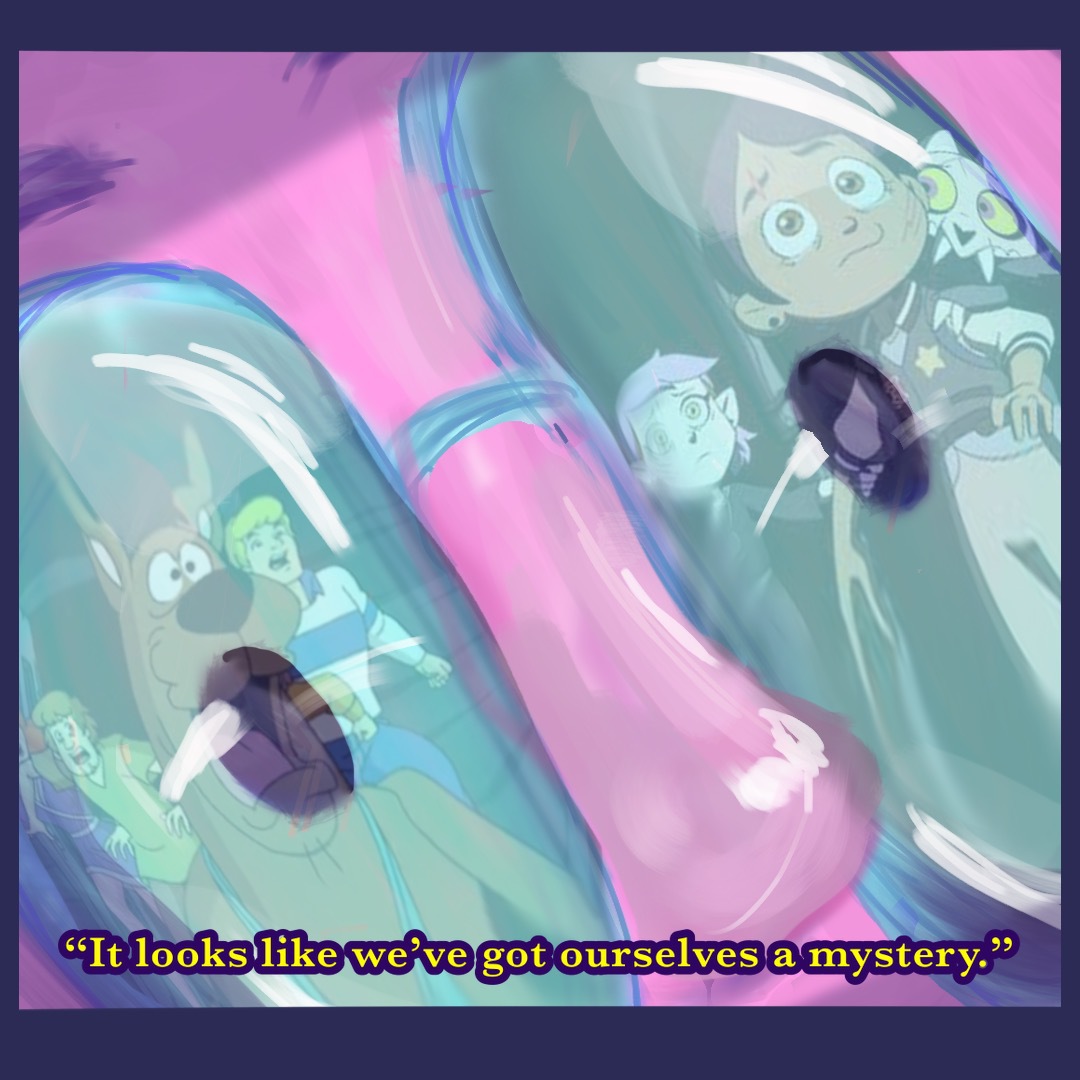Please visit response.fsu.edu for official FSU updates and resources.
The Evolution of Monsters in Children’s Horror Television

Being scared is its own kind of fun, and over the decades, many children’s animated television shows understood this. What separates comedic cartoons from most horror animation is monsters. For the purpose of this list, monsters are nonhuman creatures meant to scare the characters and ideally the audience, even if the scare is played off for laughs. Animated monsters are all horrifying in their own world, and as of late, in our world too.
Over fifty years ago, Scooby-Doo, Where Are You! premiered on the small screen. This series stars a gang of teenagers and their titular dog solving a supernatural mystery in each episode, a true embodiment of the ‘monster of the week’ approach to horror television. The monsters of the Scooby-Doo franchise’s original show are characteristic of their time: scary on the outside but not real. Every monster is a person in a mask and suit trying to use fear and superstition for personal gain. Since the threat isn’t real, the monster isn’t enough of a monster to create fear in the viewer. In a way, this show’s monsters are people and people are monsters, which is a meta-commentary most wouldn’t expect from a cartoon made in 1969.
Despite Scooby-Doo, Where Are You! having low stakes and a cartoonish style, the terror created by the monster in its world is real, sometimes real enough to cover a crime until the Mystery Machine breaks down nearby. The disconnect between the characters’ fear and the viewer’s fear is in how and when the series was made, not because the monster was as comical to them as it was to the audience. We’re meant to laugh and to know it’s not real so we won’t become afraid.
In the same way, Courage the Cowardly Dog uses humor to keep its paranormal monsters from being too scary. This horror comedy cartoon features Courage, a terrified dog trying to protect his owners from the host of supernatural and otherworldly monsters that appear regularly nearby. Courage the Cowardly Dog has updated and leaned into horror compared to its predecessor Scooby-Doo, Where Are You! These monsters are real and even pay homage to horror movie tropes of the time, like the Queen of the Black Puddle functioning as a mix of a siren, the Creature from the Black Lagoon, and Dracula. The monsters’ portrayal is terrifying for Courage, but made silly through his overexaggerated screams and their cartoonish designs. We laugh at these monsters but know them as monsters nonetheless.
Thankfully, Courage the Cowardly Dog doesn’t shy from horror. This show is all about fear, specifically Courage’s, to the point where its entire premise relies on his being afraid. To communicate why he is afraid to the audience, the monsters are surrounded by shadows and use spooky sound effects as a sort of toned-down horror film. It isn’t enough for monsters to only look scary, so often times the monster of the week will kidnap one of Courage’s owners or otherwise directly threaten their safety. Courage’s screaming reactions both amplify and downplay the monster’s ability to scare—he validates their monstrosity by being afraid, yet his reaction is made to amuse the audience. Everything about these monsters says they should be feared and Courage reacts appropriately so the audience doesn’t have to.
Recently, horror animation has been able to cross over into making the audience afraid. Series like The Owl House and Dead End: Paranormal Park are two delightful examples. If you haven’t caught up, be not afraid—I’ll keep this spoiler-free just for you. Both series are horror comedies with their own unique spin on monsters like demons and witches.
Dead End: Paranormal Park is about two teenagers hired at a haunted theme park along with their possessed dog and new demon friend. The first scene is outright horror as a young woman is chased into a mansion during a dark, stormy night and her distorted reflection causes her to go missing. The series introduces more monsters plucked from scary campfire stories, like one who responds to a summons like Bloody Mary and picks off the characters one by one. The characters are of course scared by these monsters, but the horror is not brought down as much as one would expect from a children’s show. There are real stakes and a genuine fearful experience with a monster is captured to convey fear by making the audience see the monster from the character’s point of view. There’s little to no separation between the character’s view of the monster and that of the audience to produce a colorful yet horrifying experience.
Similarly, The Owl House creates a near-perfect balance between horror and comedy. The series focuses on Luz Noceda, a young human traveling to the demon realm to learn to be a witch. As a result of the show taking place primarily in the demon realm, Luz is exposed to monsters on a daily basis. Though some of her earlier reactions are played for comedy, the monsters grow darker along with their on-screen horror as the series progresses. Horror tropes abound, such as being hunted by a beast at home while the power is out, shapeshifters, violence shown through shadows, and the most blood and gore the show can get away with. These monsters are scary both to the characters and viewers, with no one to scream for them or unmask the bad guy. When we’re supposed to be afraid, we feel it.
Interestingly, most horror animation made for children happens to be comedic, even modern shows that are meant to make your skin crawl. Maybe monsters are always funny in the light and only murderous in the dark.
Written by: Jay Diaz
Art by: Isabella Limbo



